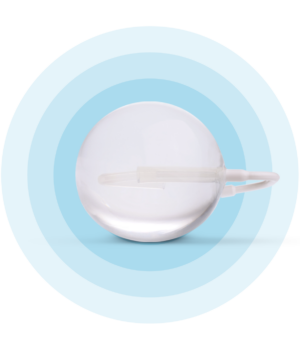Gastric Emptying and Its Correlation With Weight Loss and Body Mass Index in Patients With an Intragastric Balloon
Spatz3 is the world’s only Adjustable Gastric Balloon System
Known within the medical community as gastroparesis, slow gastric emptying can have a noticeable impact upon your ability to efficiently digest food as well as your comfort after eating a meal.
However, the public is not always familiar with the root causes or the relationship between weight loss in patients who have already undergone a gastric balloon procedure. We will attempt to clarify these points so that you can appreciate your options as well as the long-term prognosis.

Receive your free 4 -step guide today!
In each step, you’ll learn new tips to help you choose the RIGHT weight loss solution!
What Exactly is Slow Gastric Emptying and What are the Main Causes?
This condition is primarily characterized by the inability for food to efficiently travel between the stomach and the small intestine. However, no physical blockage is present. There are nonetheless several risk factors that may increase the chances of developing such a digestive disorder. Some common causes include:
- Viral infections related to the stomach.
- Nervous system disorders including
- Parkinson’s disease and multiple sclerosis.
- An underactive thyroid (known as hypothyroidism).
- Damage to the vagus nerve due to surgery or physical trauma.
Note that confirming the presence of gastroparesis will involve several tests including a general examination, an in-depth look at the digestive system and the detection of symptoms such as frequent belching, bloating, nausea, or vomiting. A gastric emptying test procedure may also be performed to determine how quickly food exits from the stomach into the intestinal tract.
The Relationship Between Gastroparesis and Intragastric Balloons
Let us now examine a more practical concern for those who are fitted with traditional intragastric balloons. Is there any correlation between slow gastric emptying and one of these devices? A study conducted by the National Library of Medicine has developed some interesting conclusions.
It found that individuals who opted for an intragastric balloon were at a slightly higher risk of experiencing the symptoms associated with gastroparesis. After one hour of eating, 86.8 percent experienced longer food retention times compared to 72.9 per cent (before the device was implanted). After two hours, 30.6 percent of individuals with no intragastric balloon exhibited gastroparesis symptoms. This proportion notably increased to 69.2 per cent when a gastric balloon was present.
In other words, it does seem that the use of an intragastric balloon may affect the way in which food passes between the stomach and the small intestine.

Slow Gastric Emptying Treatments at a Glance
Let us now assume that you are considering an intragastric balloon to limit your caloric intake and to lose weight. If you are concerned about the issues mentioned above, are there any treatments for rapid gastric emptying?
The first step will involve determining the causes of the condition itself. For instance, changes in your current dietary habits (such as avoiding foods high in fiber and drinking plenty of water) may help. Medications to activate specific stomach muscles and to alleviate feelings of nausea may likewise produce positive results. In rare cases, surgical intervention (including the use of a feeding tube) could be warranted.
How Can You Increase Your Gastric Emptying Rate?
Furthermore, it may be possible to enhance your digestive processes by adopting a handful of healthy habits. Here are some recommendations:
- Eating smaller meals more frequently throughout the day.
- Making it a point to remain hydrated.
- Avoiding alcohol and carbonated beverages.
- Thoroughly chewing your food.
- Performing physical activities after consuming a large meal (these promote more efficient digestion).
As always, it is first prudent to speak with your physician or a digestion specialist to obtain an accurate diagnosis. This is even more relevant before opting for any type of intragastric balloon procedure.
The Benefits of the Spatz3 Gastric Balloon
One of the most recent innovations involves the flexible design of the Spatz3 balloon. Unlike traditional methods, the size of this balloon can be changed in accordance with variables such as the dimensions of your stomach, comfort and dietary habits. It is therefore much less likely to induce gastroparesis when compared to standard intragastric balloons. Furthermore, weight loss treatment times can be extended for up to one year; enabling you to reach your long-term goals.
Those who wish to learn more about the additional benefits that the Spatz3 gastric balloon can provide are encouraged to contact a representative. While slow gastric emptying can represent a frustrating scenario, there are many helpful options to consider.
Are you considering a gastric balloon before or after pregnancy? If so, contact Spatz Medical to learn about the revolutionary, adjustable Spatz3 gastric balloon. The Spatz3 balloon can be dialed up or down to accommodate your specific health needs and goals.
Contact a Spatz3 representative
near you

